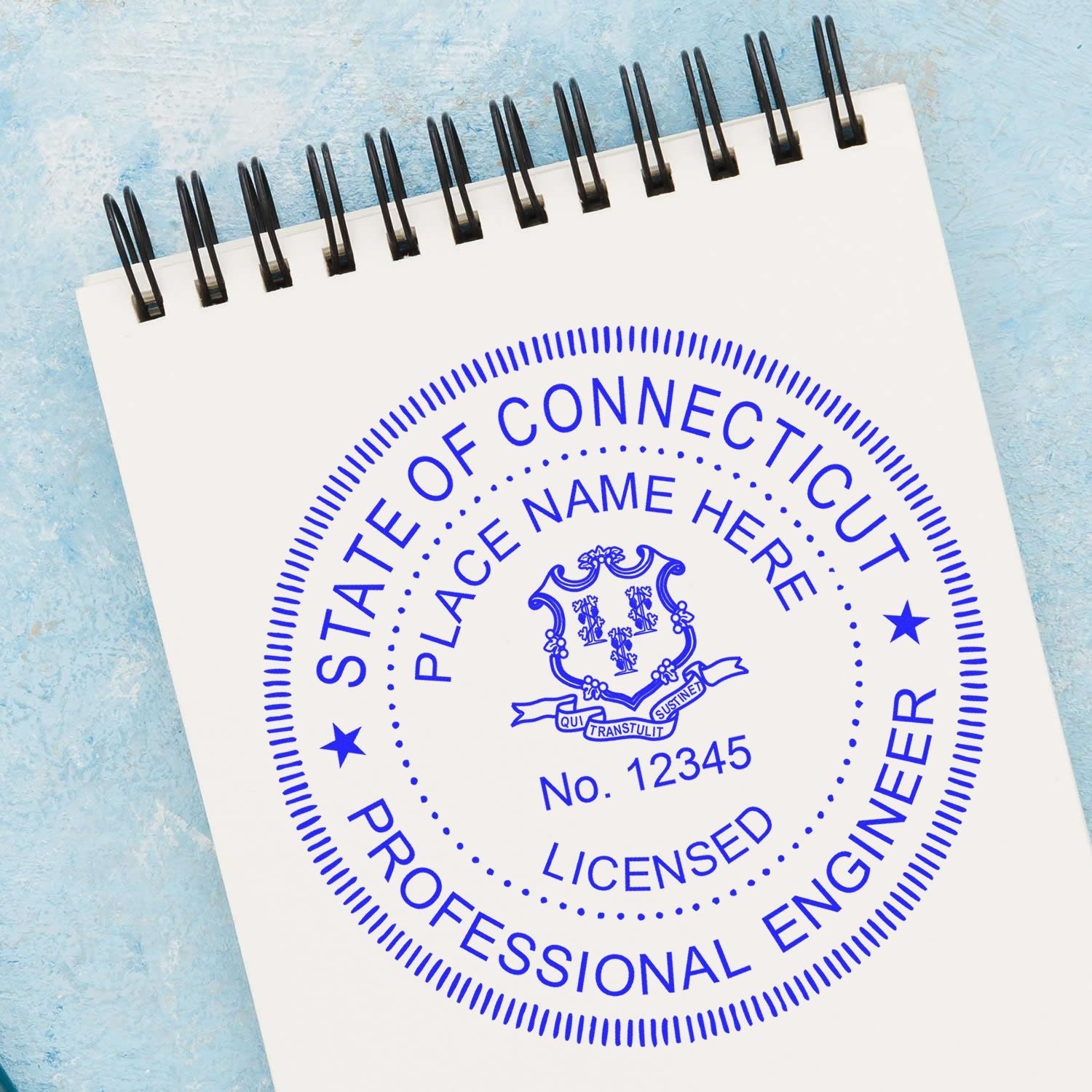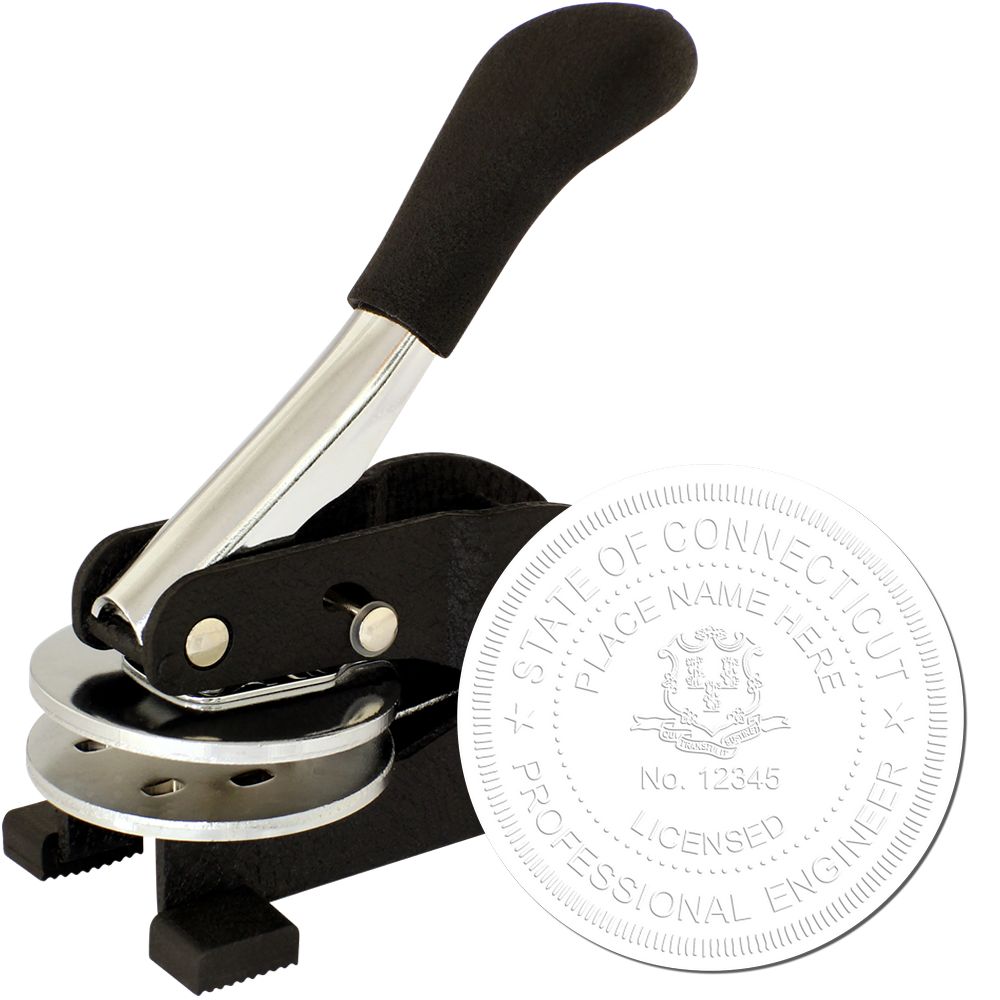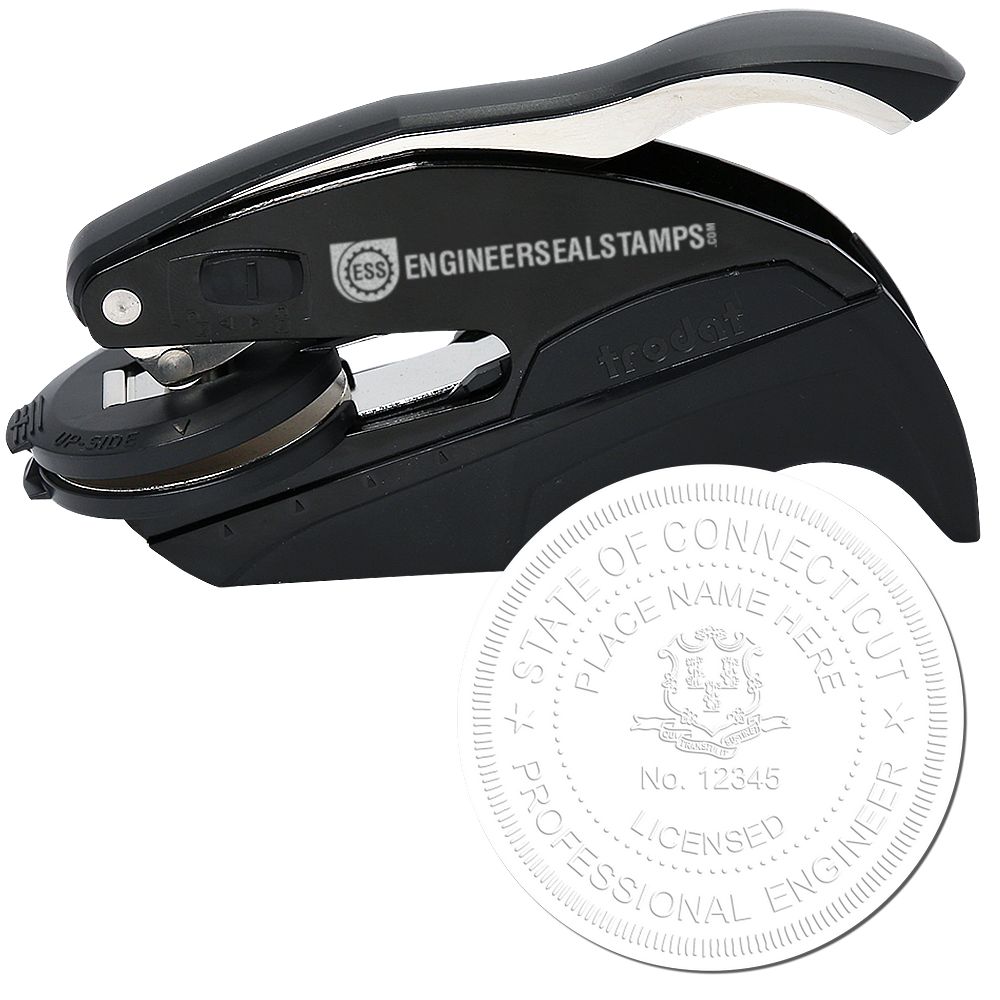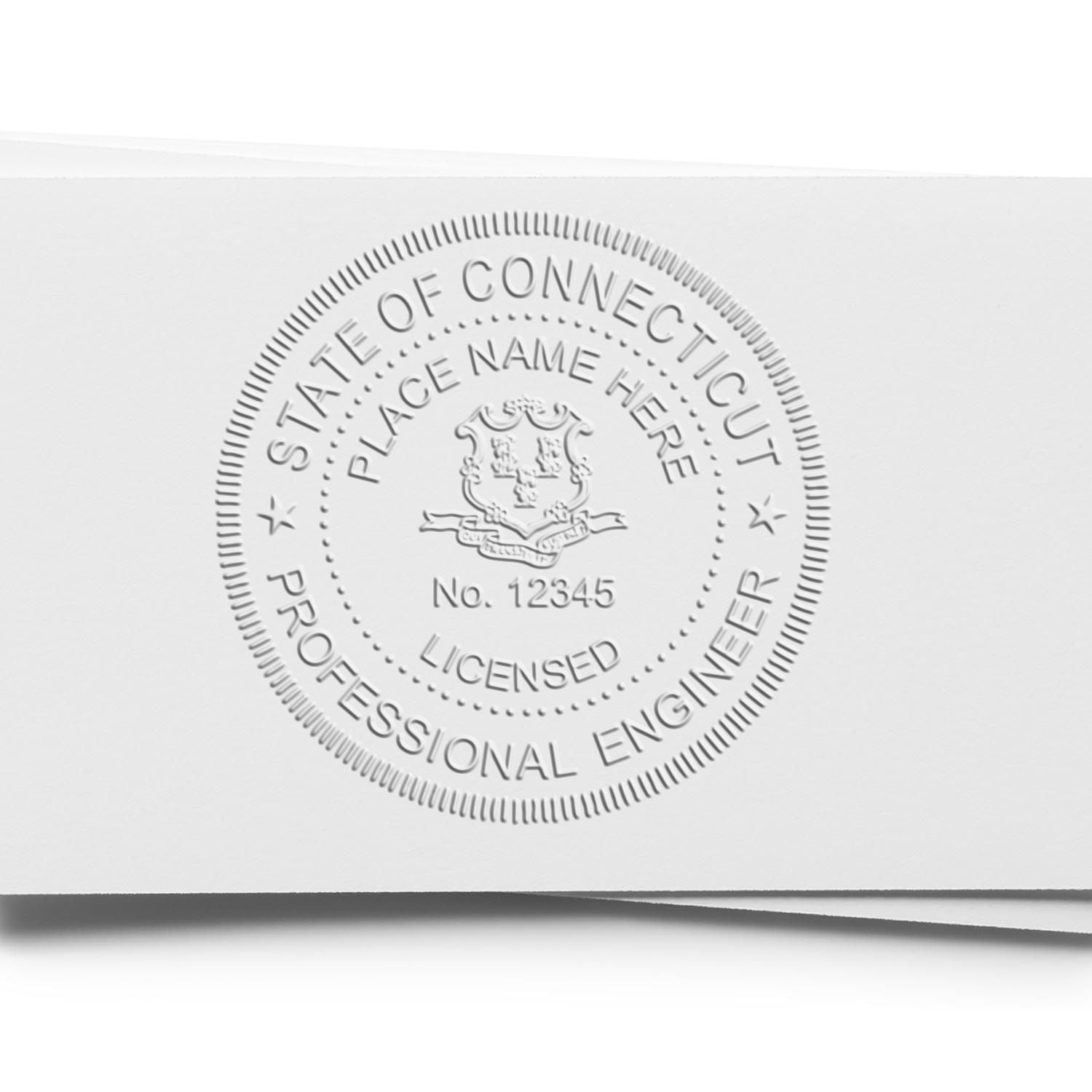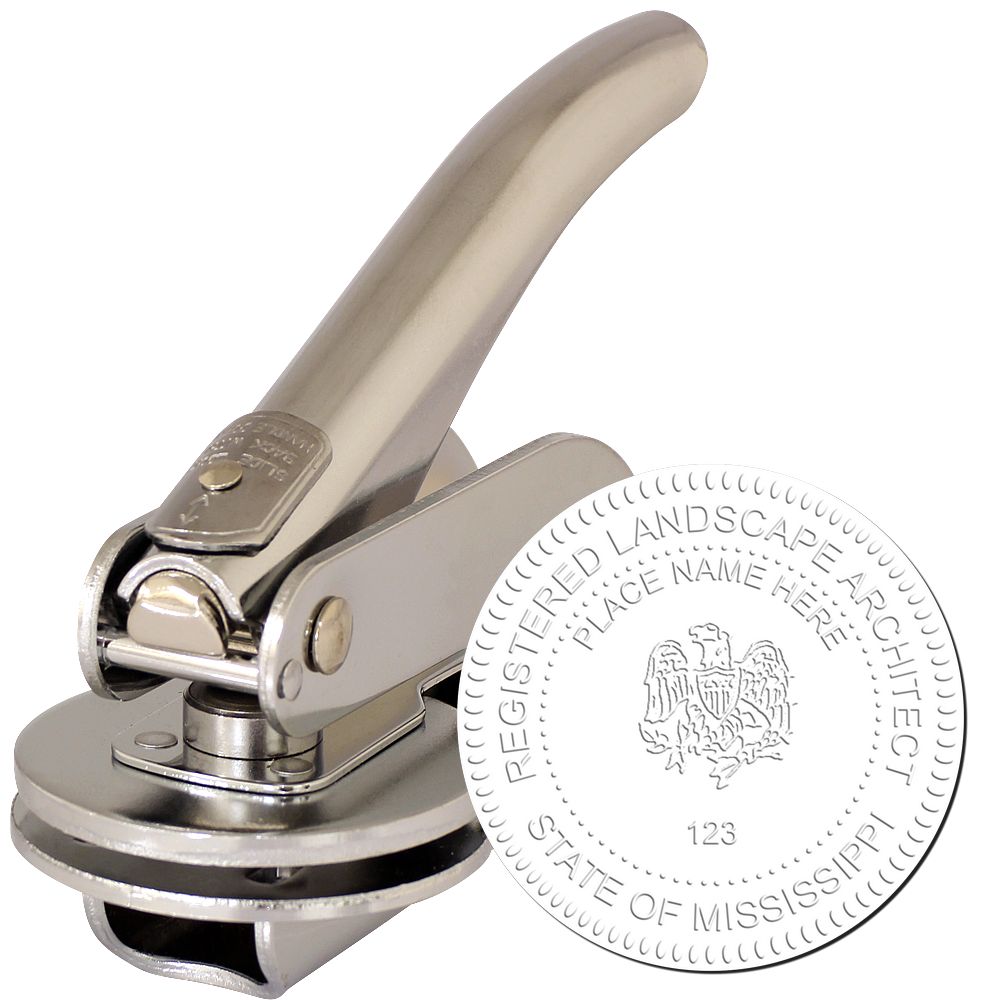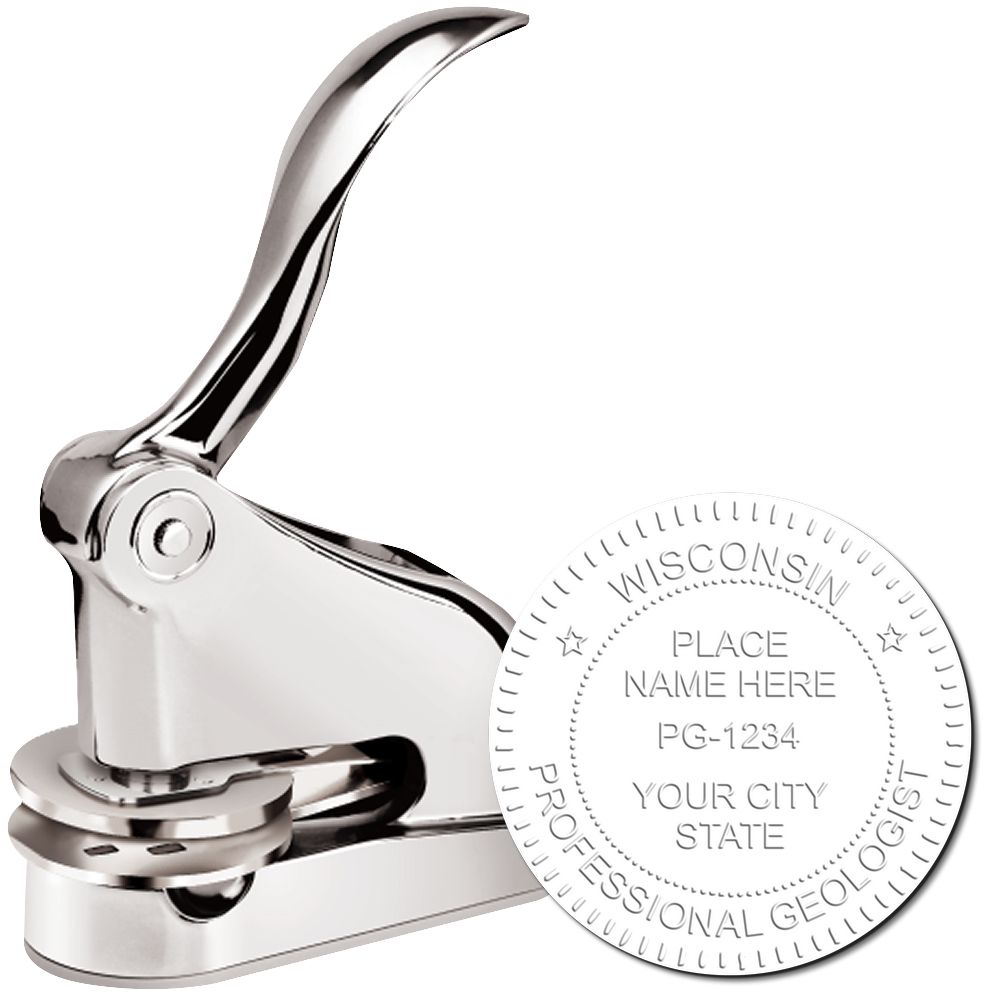Understanding the Connecticut PE Stamp
Before delving into the requirements and application process for obtaining a Professional Engineer (PE) stamp in Connecticut, it's important to have a clear understanding of what a PE stamp is and why it holds significant importance in the state.
What is a PE Stamp?
A PE stamp, also known as an Engineer Seal or Engineering Stamp, is a symbol that represents the certification and authority of a licensed Professional Engineer. It is a mark of assurance that the engineering work performed by the individual meets the required standards of safety, ethics, and professionalism.
The PE stamp typically consists of the engineer's name, license number, and the phrase "Professional Engineer" or "PE." It is affixed to engineering documents, drawings, or plans to indicate that they have been reviewed and approved by a licensed professional.
Importance of the PE Stamp in Connecticut
In Connecticut, the PE stamp holds significant importance for engineering professionals. It signifies that the individual has met the rigorous educational, experience, and examination requirements set forth by the Connecticut Department of Consumer Protection (DCP) and is legally authorized to practice engineering within the state.
The PE stamp is not only a professional requirement but also a legal requirement for certain types of engineering work in Connecticut. It is necessary for projects that involve public safety, such as the design of bridges, buildings, water systems, and electrical systems. The stamp provides assurance to clients, regulatory bodies, and the public that the engineering work has been performed by a qualified and licensed professional.
By adhering to the guidelines and regulations associated with the PE stamp, engineers in Connecticut can uphold the highest standards of integrity, competence, and accountability in their field. For more detailed information on obtaining a PE stamp in Connecticut, refer to our article on connecticut pe stamp guidelines.
Understanding the significance of the PE stamp sets the foundation for exploring the specific requirements and processes involved in becoming a licensed Professional Engineer in Connecticut.
Connecticut PE Stamp Requirements
To obtain a Professional Engineer (PE) stamp in Connecticut, there are specific requirements that need to be met. These requirements ensure that individuals possess the necessary education, experience, and knowledge to perform engineering work in the state.
Education and Experience
To be eligible for a PE stamp in Connecticut, individuals must have completed a bachelor's degree in engineering from an accredited institution. The degree should be in an engineering discipline relevant to the area of practice. In addition to the educational requirement, candidates must also have accumulated a certain amount of engineering experience.
Connecticut requires a minimum of four years of progressive engineering experience, which is typically obtained after completing the bachelor's degree. This experience should be relevant to the chosen field of engineering and should demonstrate the candidate's ability to apply engineering principles in real-world situations.
Passing the PE Exam
Passing the PE exam is a crucial step towards obtaining a PE stamp in Connecticut. The PE exam is a comprehensive examination that evaluates an engineer's competency in their chosen field. It tests their understanding of engineering principles, their ability to analyze and solve engineering problems, and their knowledge of state-specific engineering laws and regulations.
In Connecticut, the PE exam is administered by the National Council of Examiners for Engineering and Surveying (NCEES). The exam consists of two parts: the Fundamentals of Engineering (FE) exam and the Principles and Practice of Engineering (PE) exam. The FE exam is typically taken after completing the bachelor's degree, while the PE exam is taken after gaining the required engineering experience.
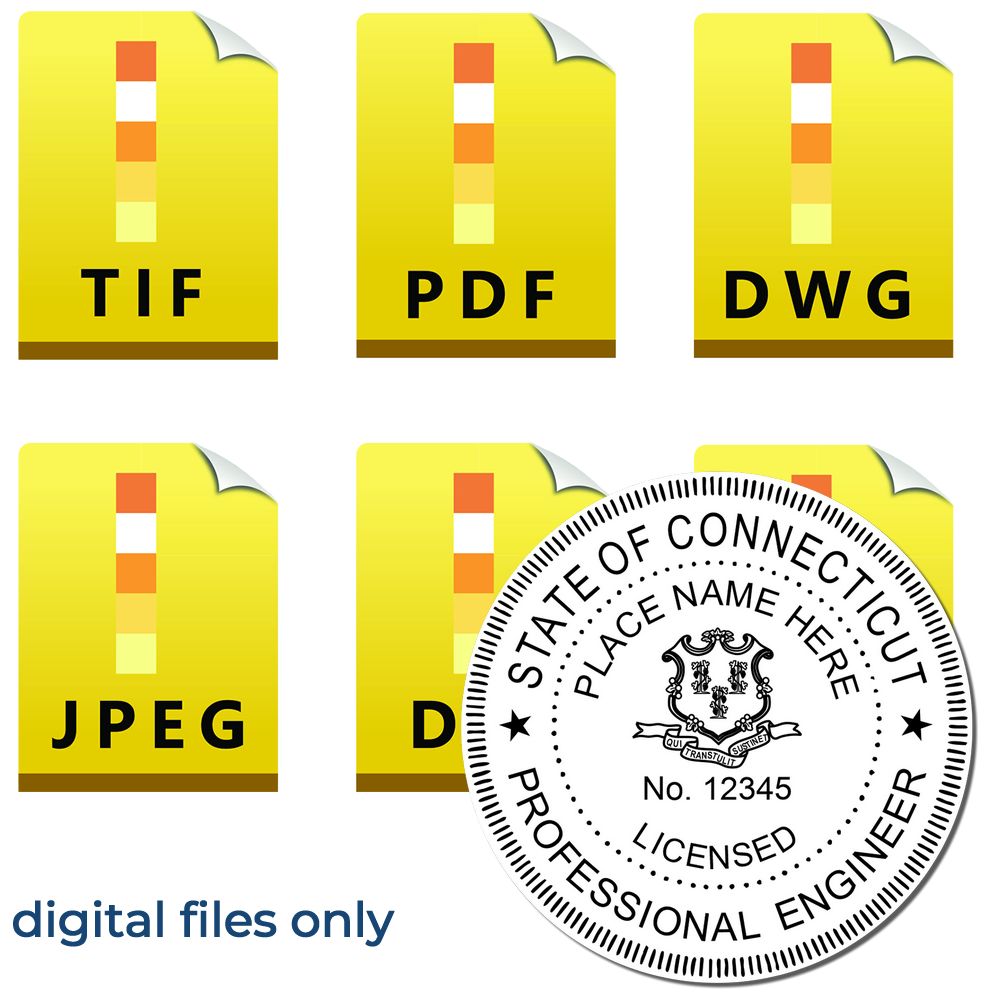

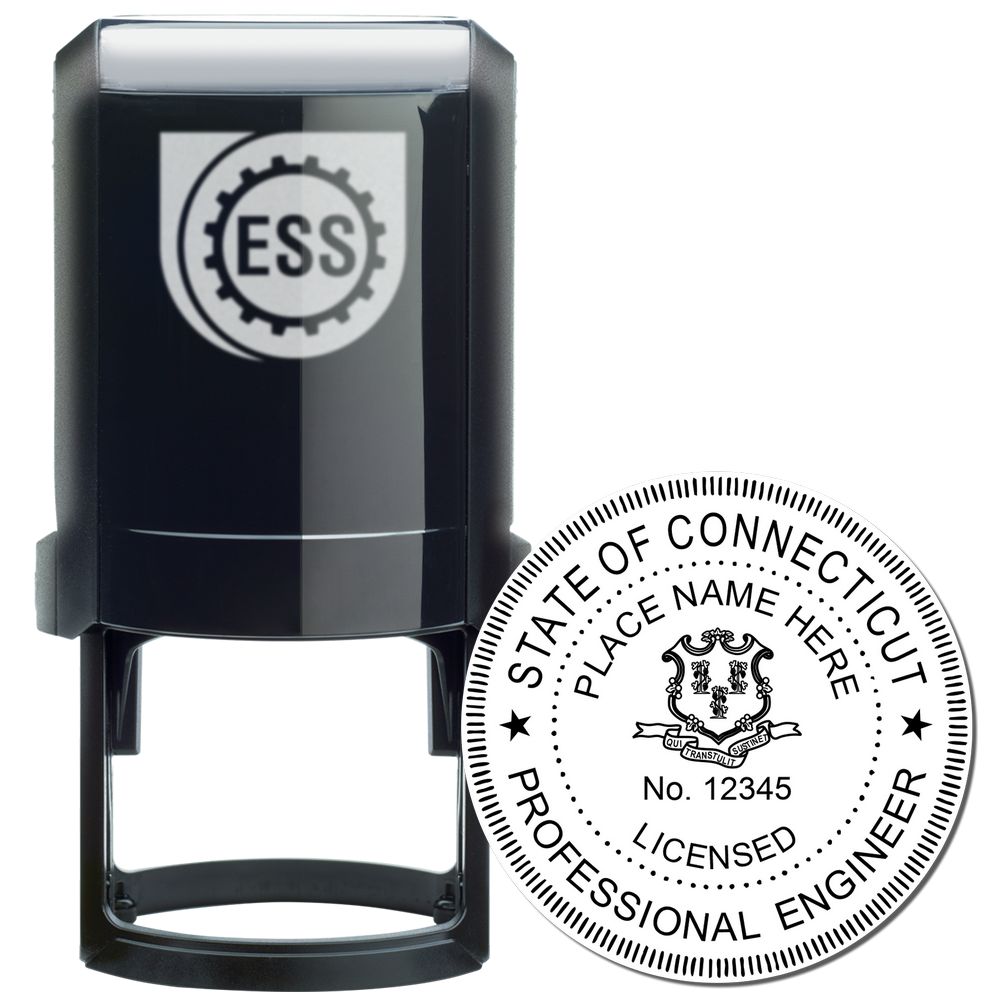
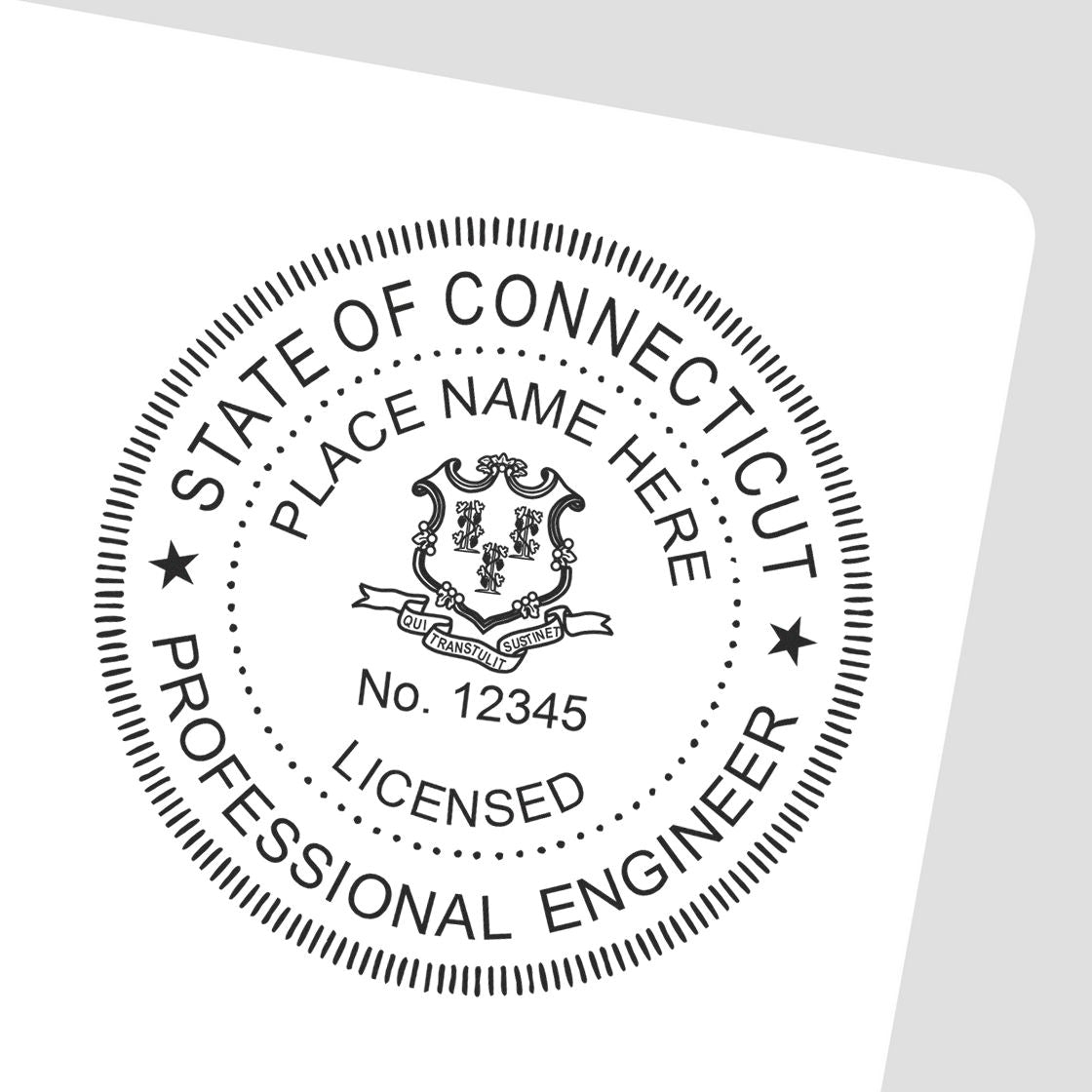

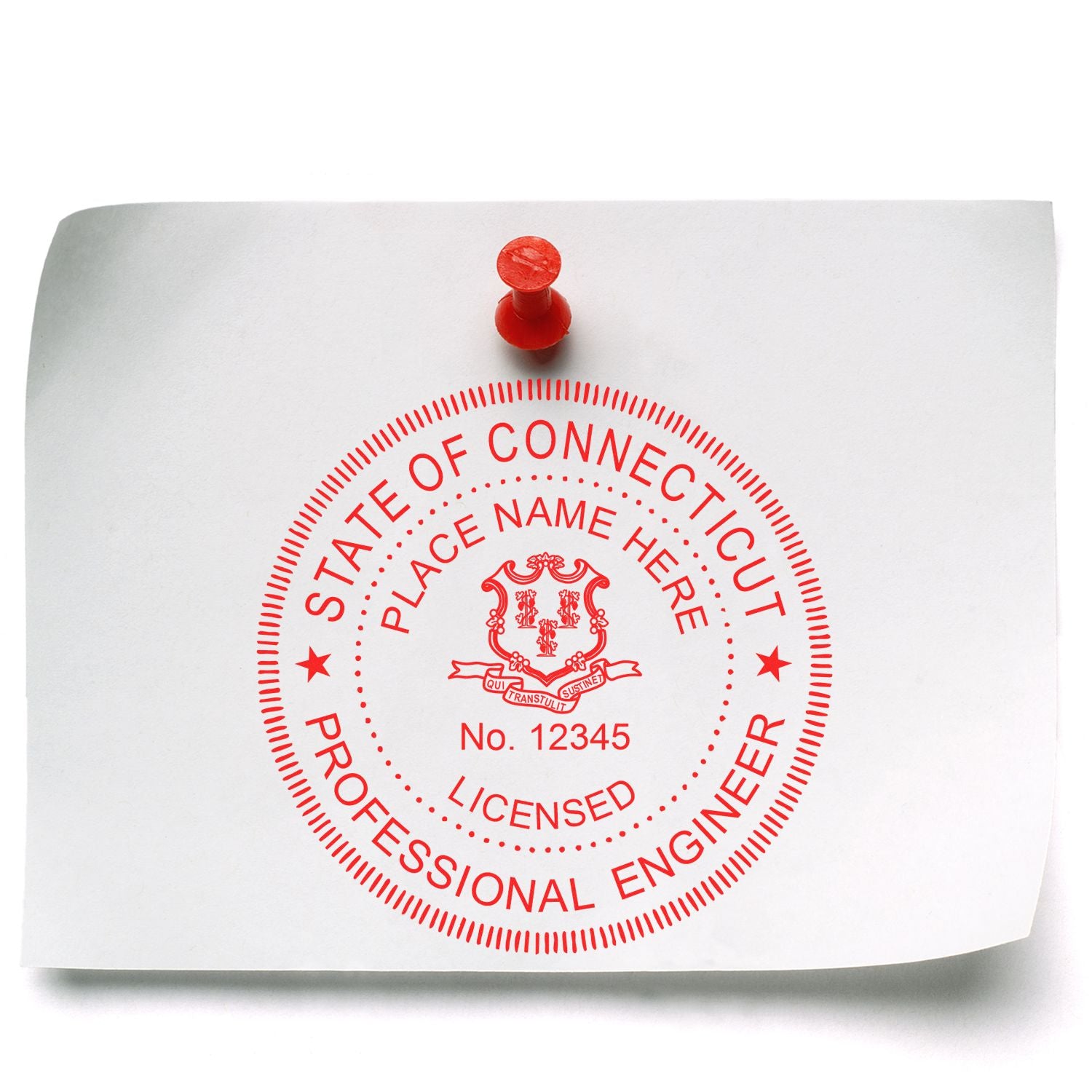
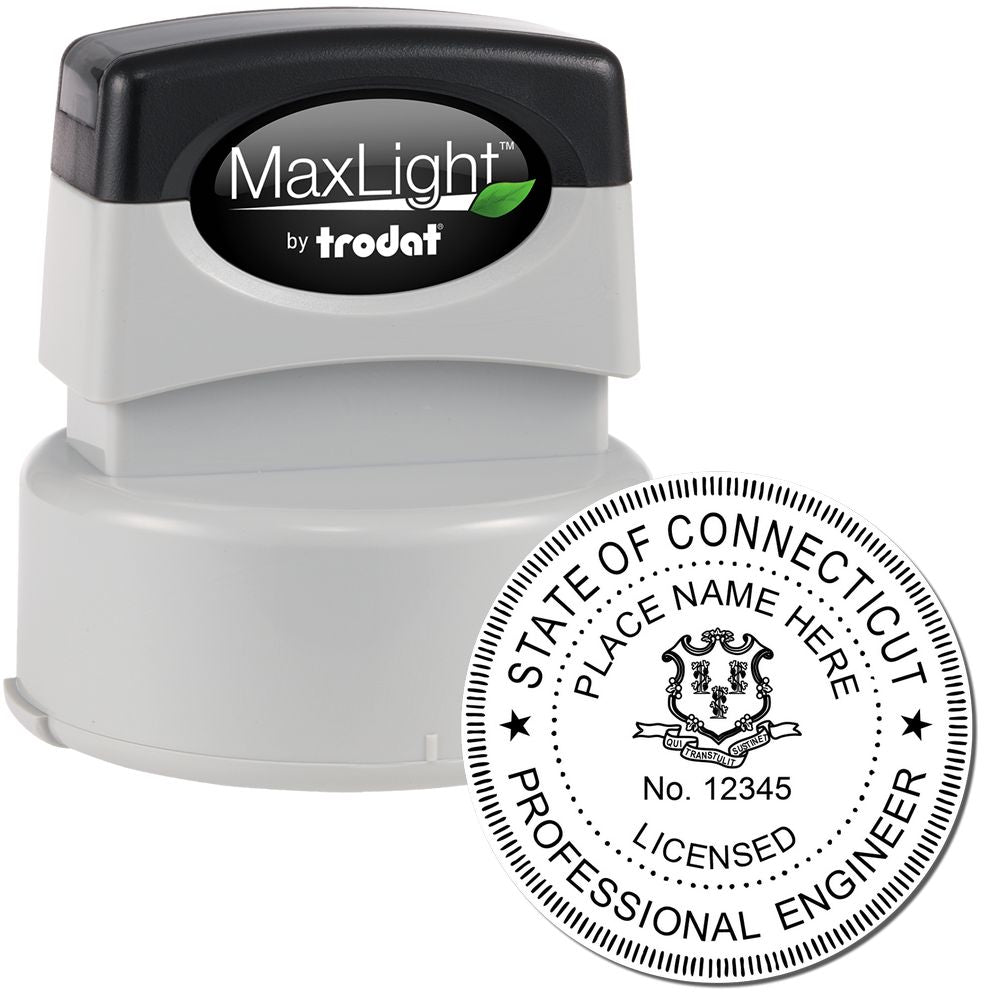
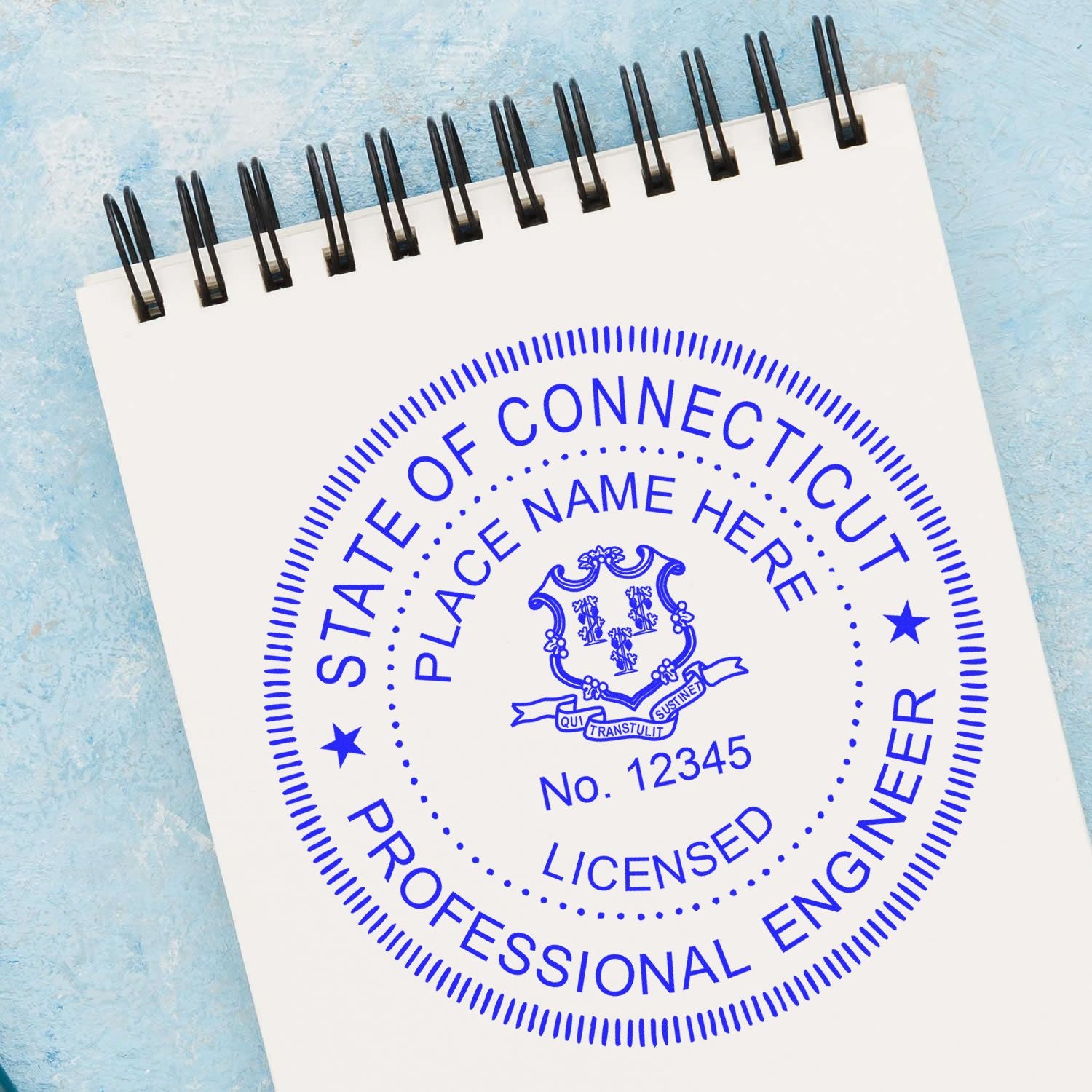
Application Process
Once the education, experience, and PE exam requirements are met, individuals can proceed with the application process for a PE stamp in Connecticut. The application typically involves submitting an application form, along with the required supporting documents, such as transcripts, experience records, and references.
It's important to carefully review the Connecticut Department of Consumer Protection's guidelines for the application process. These guidelines provide detailed instructions on the necessary documents, fees, and any additional requirements that need to be fulfilled.
By meeting the education and experience requirements, passing the PE exam, and completing the application process, individuals can obtain a PE stamp that signifies their professional expertise and ability to practice engineering in Connecticut.
For more information on the Connecticut PE stamp requirements and guidelines, visit our article on PE stamp Connecticut.
Professional Engineering License in Connecticut
Obtaining a Professional Engineering (PE) license in Connecticut is a significant achievement for engineers looking to practice their profession in the state. This license demonstrates a high level of competence and expertise, allowing engineers to take on greater responsibilities and provide their services with confidence. In this section, we will explore the benefits of obtaining a PE license and the other requirements for PE licensure in Connecticut.
Benefits of Obtaining a PE License
Obtaining a PE license in Connecticut offers numerous benefits for engineers. Some of the key advantages include:
-
Enhanced Career Opportunities: A PE license can open doors to a wider range of job opportunities. Many employers prefer or require candidates to hold a PE license for engineering positions that involve public safety, such as structural design, environmental engineering, and civil engineering.
-
Increased Professional Credibility: The PE license is a recognized symbol of an engineer's professional competence and ethical standards. It instills confidence in clients, employers, and the general public, highlighting an engineer's commitment to upholding the highest industry standards and protecting public safety.
-
Legal Authority to Stamp Documents: With a PE license, engineers gain the legal authority to stamp engineering documents, such as plans, drawings, and specifications. This stamp signifies that the engineer responsible for the work has met the required standards and that the project complies with relevant codes and regulations.
-
Opportunity for Specialization: Some engineering disciplines require a PE license to specialize or practice as a consultant. For example, obtaining a PE license in structural engineering allows engineers to work on projects involving the design and analysis of structures.
Other Requirements for PE Licensure
In addition to passing the Professional Engineering (PE) exam, there are other requirements engineers must fulfill to obtain a PE license in Connecticut. These requirements include:
-
Education: Candidates must have a minimum of a bachelor's degree in engineering or a related field from an accredited engineering program. The degree must meet the educational requirements outlined by the Connecticut Department of Consumer Protection.
-
Experience: Candidates must demonstrate a satisfactory level of engineering experience. The exact amount of experience required varies depending on the candidate's education level. Typically, candidates must have a minimum of four years of acceptable engineering experience.
-
Ethics and Good Moral Character: Applicants must demonstrate good moral character and ethical conduct. This includes providing references who can vouch for the applicant's character and integrity.
Save 11%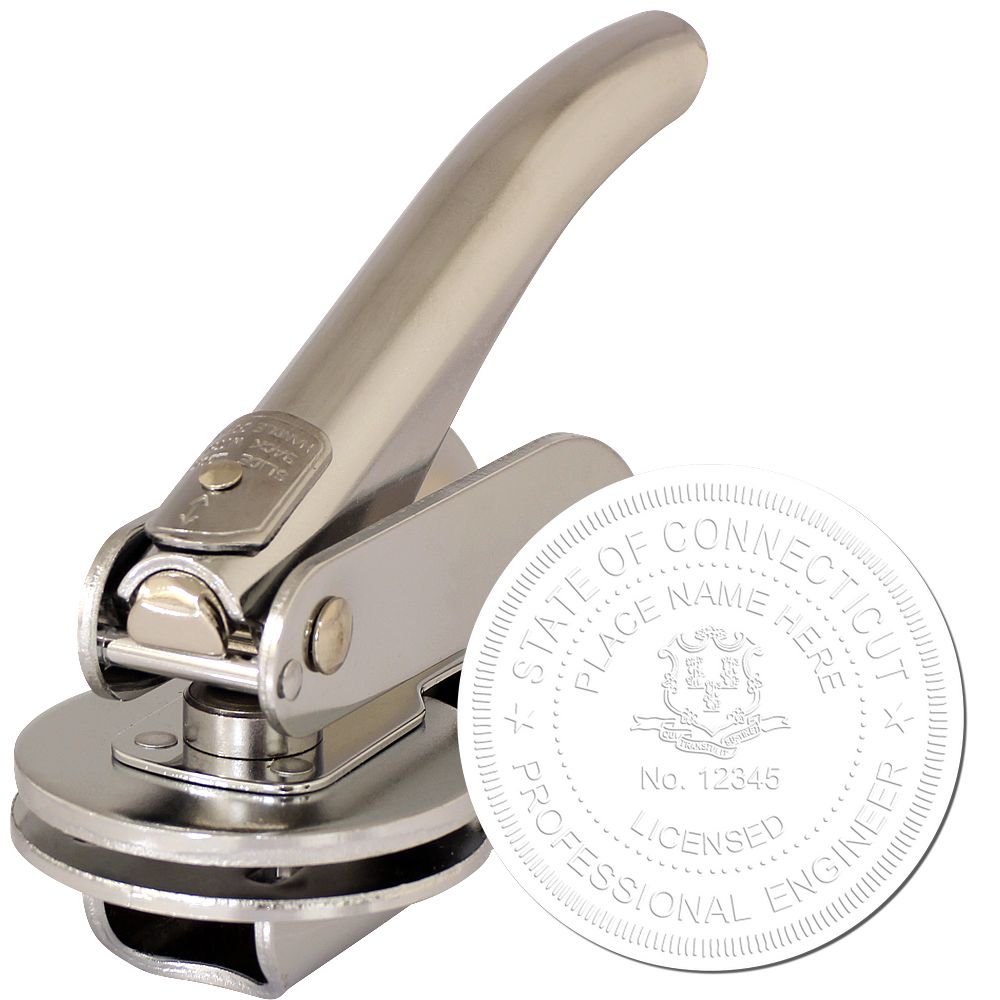
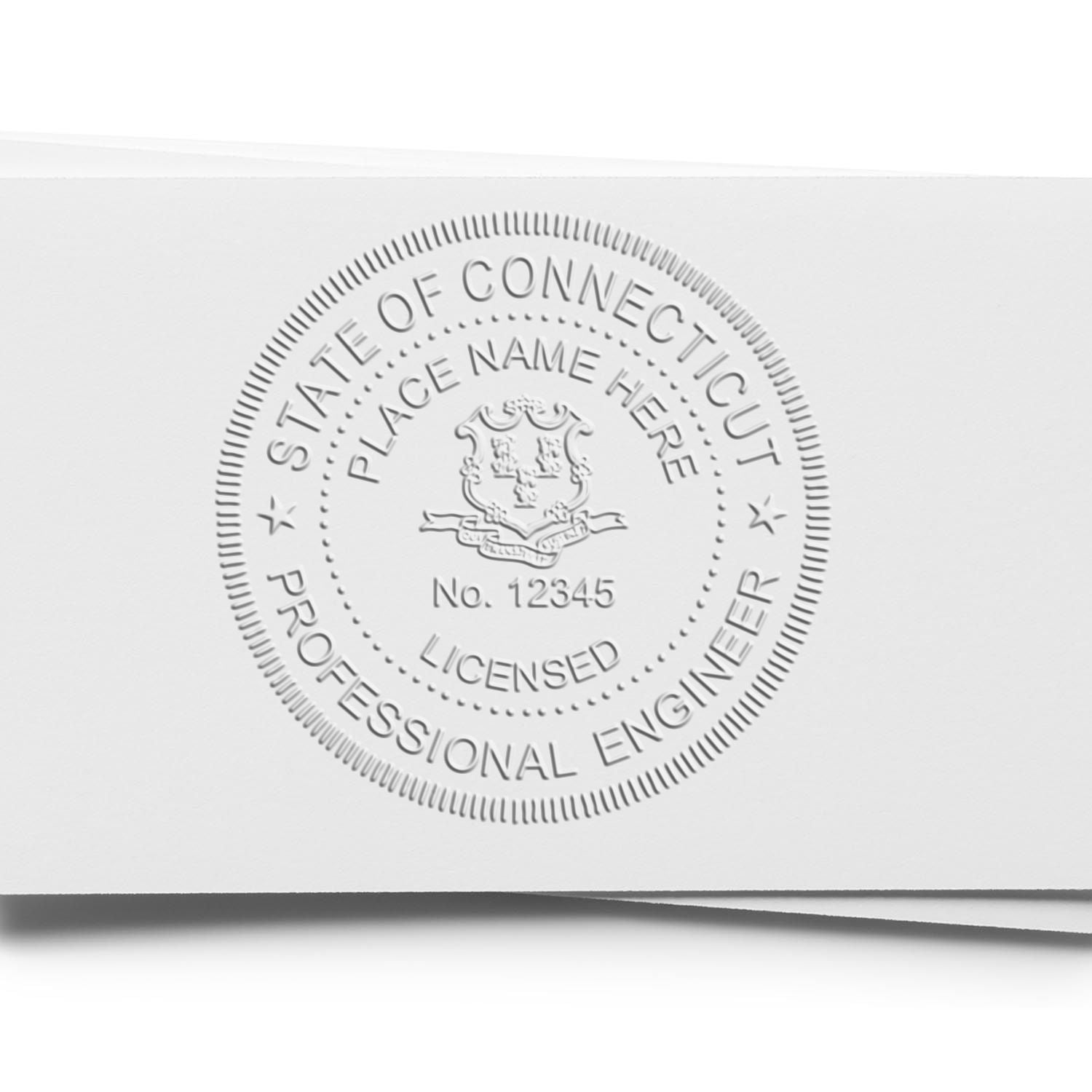 Handheld Connecticut Professional Engineer Seal Embosser3001ENG-CTSale price$39.95 Regular price$44.95Save 14%
Handheld Connecticut Professional Engineer Seal Embosser3001ENG-CTSale price$39.95 Regular price$44.95Save 14%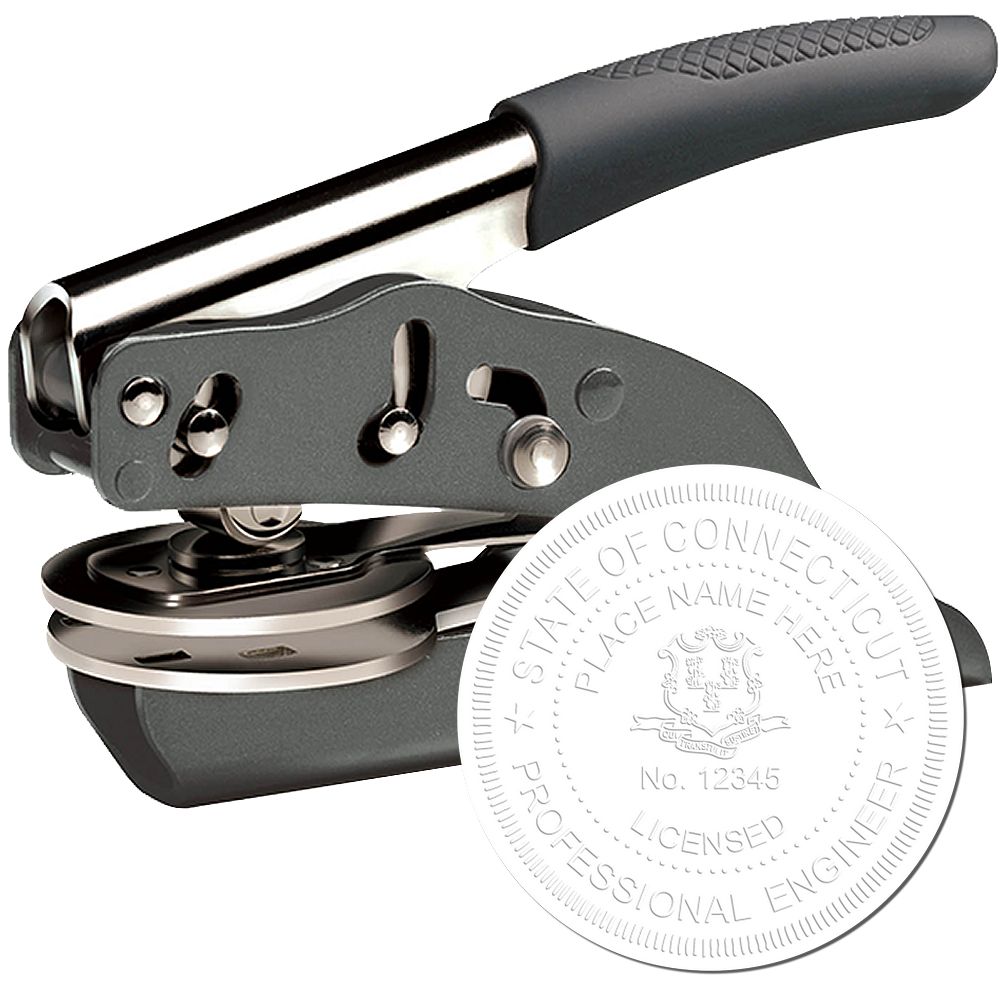
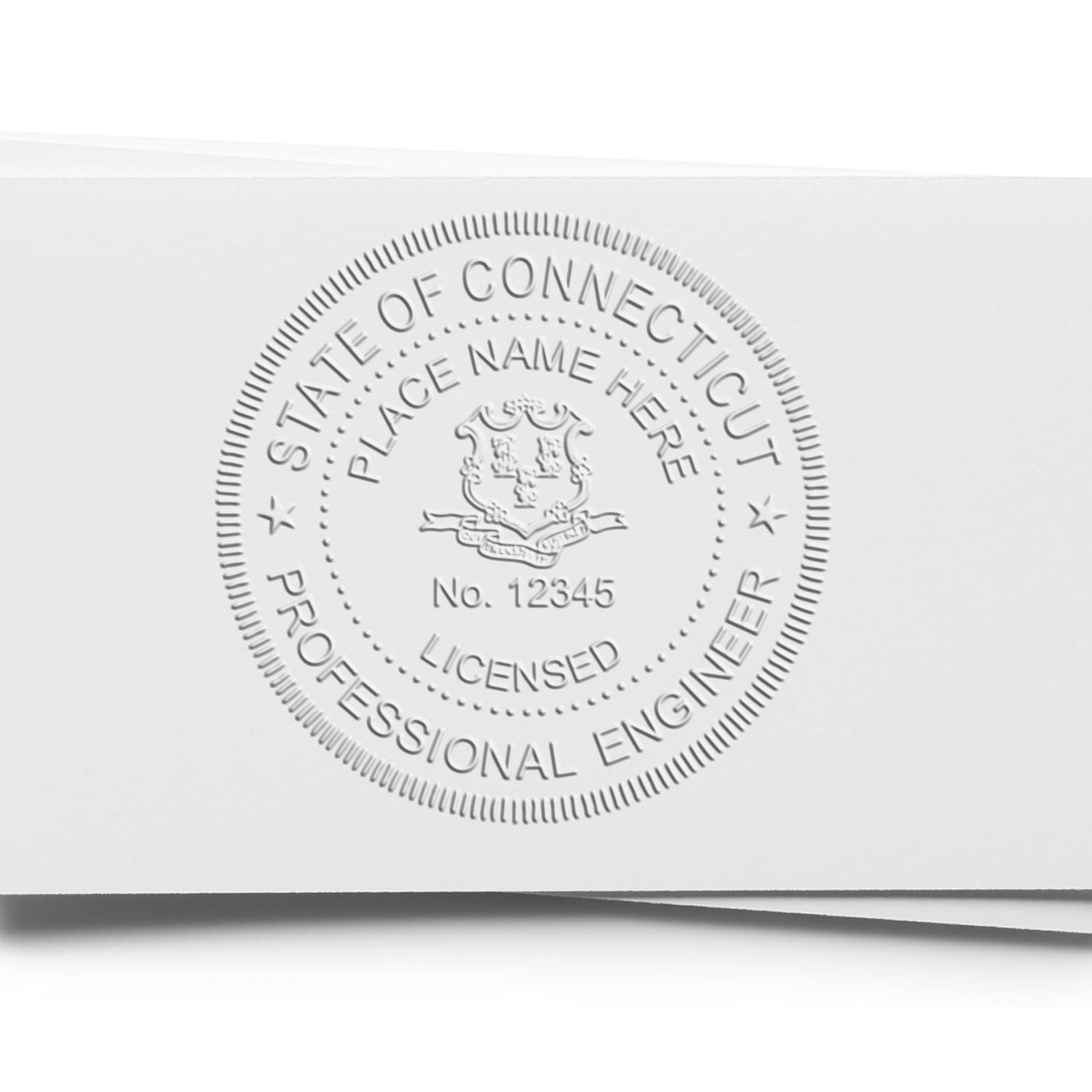 Soft Connecticut Professional Engineer Seal Embosser3001ENG-S-CTSale price$44.95 Regular price$52.00Save 7%
Soft Connecticut Professional Engineer Seal Embosser3001ENG-S-CTSale price$44.95 Regular price$52.00Save 7%
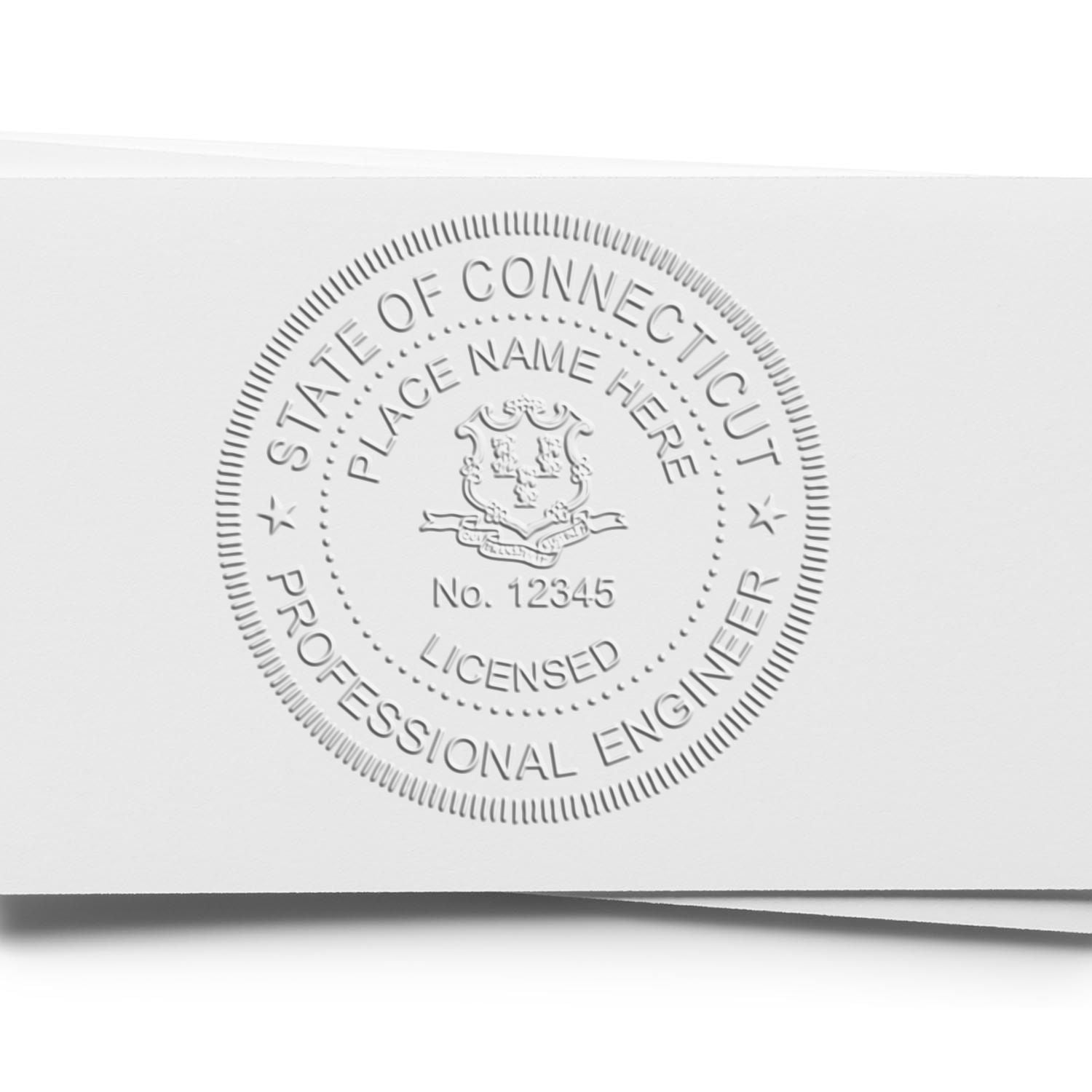 Long Reach Connecticut PE Seal for Connecticut Professional Engineer3022ENG-CTSale price$129.95 Regular price$140.00
Long Reach Connecticut PE Seal for Connecticut Professional Engineer3022ENG-CTSale price$129.95 Regular price$140.00 -
Application Process: Candidates must complete the application process, which involves submitting the necessary documentation, paying the required fees, and meeting all the deadlines set by the Connecticut Department of Consumer Protection.
For detailed information on the application process and guidelines specific to Connecticut, refer to our article on Connecticut PE stamp guidelines.
By obtaining a PE license in Connecticut, engineers can elevate their professional standing and gain access to a wide range of opportunities that require professional licensure. It's important to familiarize yourself with the specific requirements and guidelines set forth by the Connecticut Department of Consumer Protection to ensure a smooth and successful licensure process.
Using the Connecticut PE Stamp
Once you have obtained your Connecticut PE Stamp, it's important to understand when and how to use it properly. The PE Stamp is a symbol of authority and expertise, and its usage is regulated to ensure the safety and integrity of engineering projects.
When is the PE Stamp Required?
In Connecticut, the use of the PE Stamp is required in specific situations. It is typically required when an engineer is providing engineering services that involve the design, analysis, or supervision of engineering projects. These projects may include, but are not limited to, the design of structures, infrastructure, or mechanical systems.
The Connecticut Department of Consumer Protection (DCP) provides detailed guidelines on when the PE Stamp is required for different types of projects. It's important to consult these guidelines and ensure compliance to avoid any legal or professional consequences. For more information on the requirements and guidelines for the PE Stamp in Connecticut, refer to our article on Connecticut PE Stamp Guidelines.
Proper Use and Application of the PE Stamp
When using the PE Stamp, it is essential to follow specific guidelines to maintain the integrity and credibility of the stamp. Here are some important considerations:
-
Placement: The PE Stamp should be placed on the final version of the engineering document, typically in a visible and prominent location. It should be clear and legible, ensuring that it does not obstruct any critical information on the document.
-
Size and Color: The PE Stamp must meet the size and color requirements specified by the Connecticut DCP. The stamp should be of sufficient size to ensure readability, and the ink color should be a contrasting color to the background of the document.
-
Signature: The PE Stamp should be accompanied by the professional engineer's signature. The signature should match the name of the professional engineer as it appears on the engineer's license.
-
Date: The PE Stamp should include the date of the document's preparation or approval. This allows for easy reference and verification of the document's currency.
Remember, the PE Stamp represents your professional expertise and carries legal implications. Therefore, it is crucial to use it responsibly and only on documents that fall within your area of competence.
For engineers who are seeking a reliable and compliant Connecticut PE Stamp, it's recommended to consult with reputable stamp providers. They can guide you on the specific requirements and help you obtain a PE Stamp that meets the necessary criteria. For more information on the application process, check out our article on Connecticut PE Stamp Application.
By understanding when the PE Stamp is required and adhering to the proper use and application guidelines, professional engineers in Connecticut can confidently demonstrate their expertise and commitment to the highest standards of engineering practice.
FAQs about the Connecticut PE Stamp
As you navigate the process of obtaining a Professional Engineer (PE) stamp in Connecticut, you may have some questions regarding its use and requirements. Here are answers to some frequently asked questions about the Connecticut PE stamp:

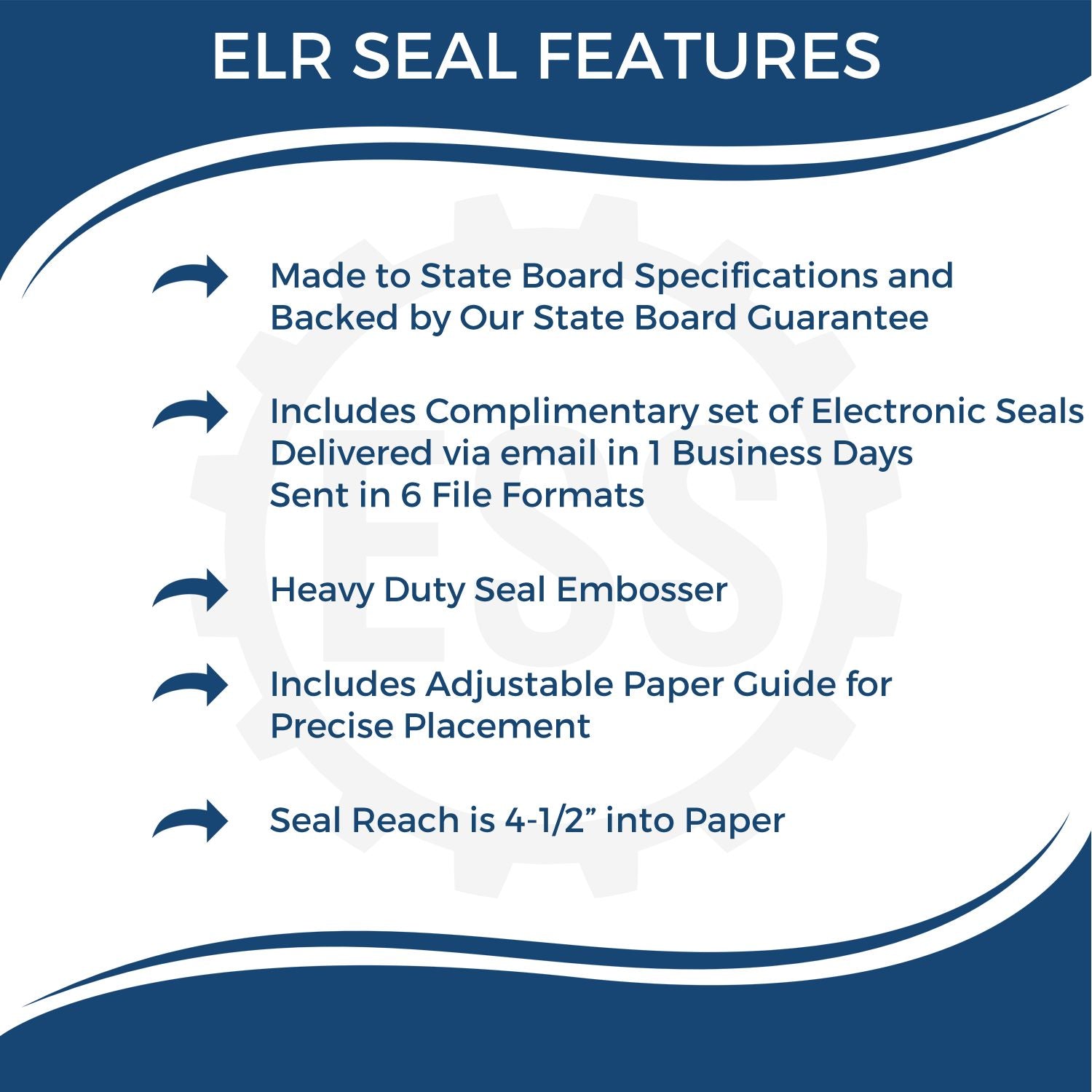

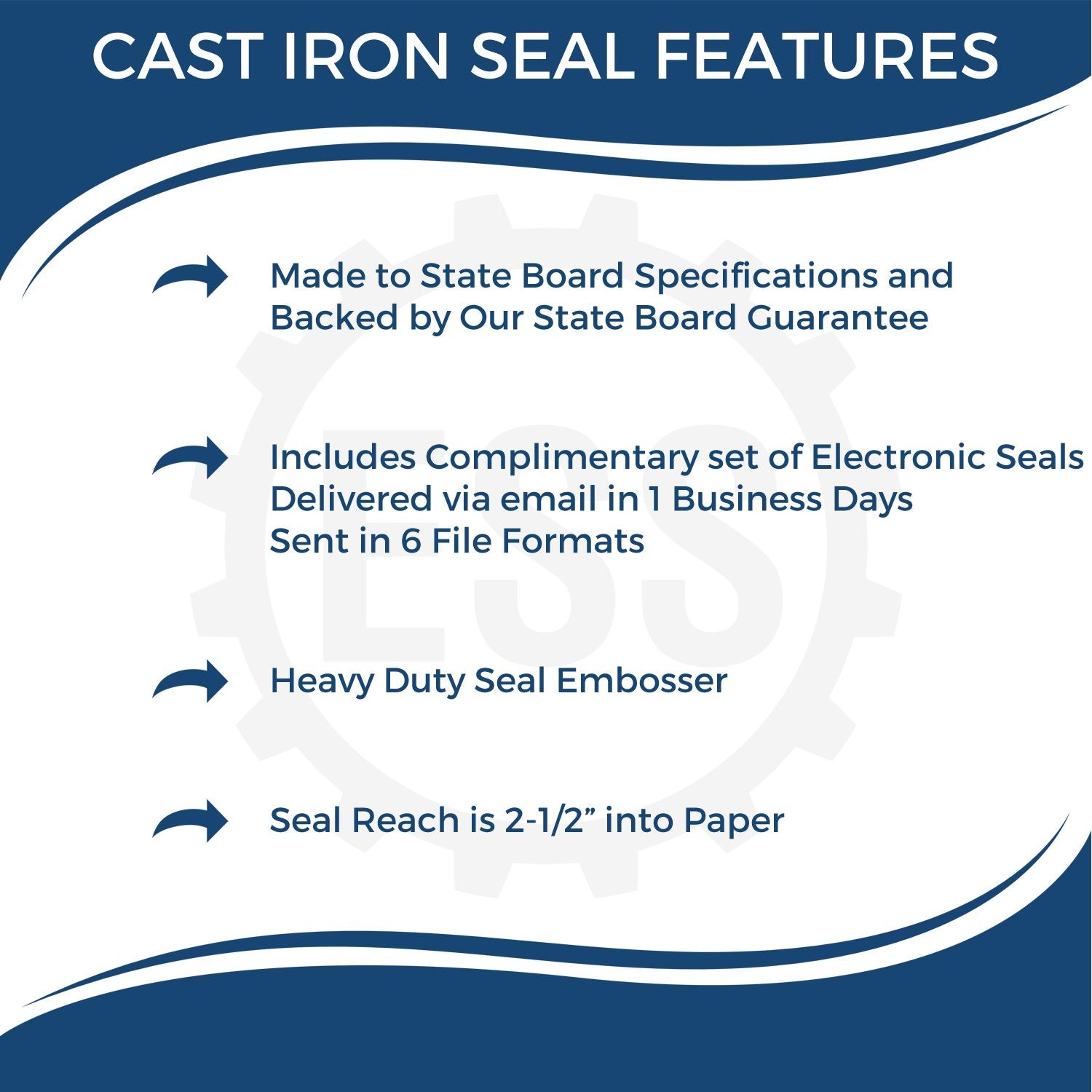

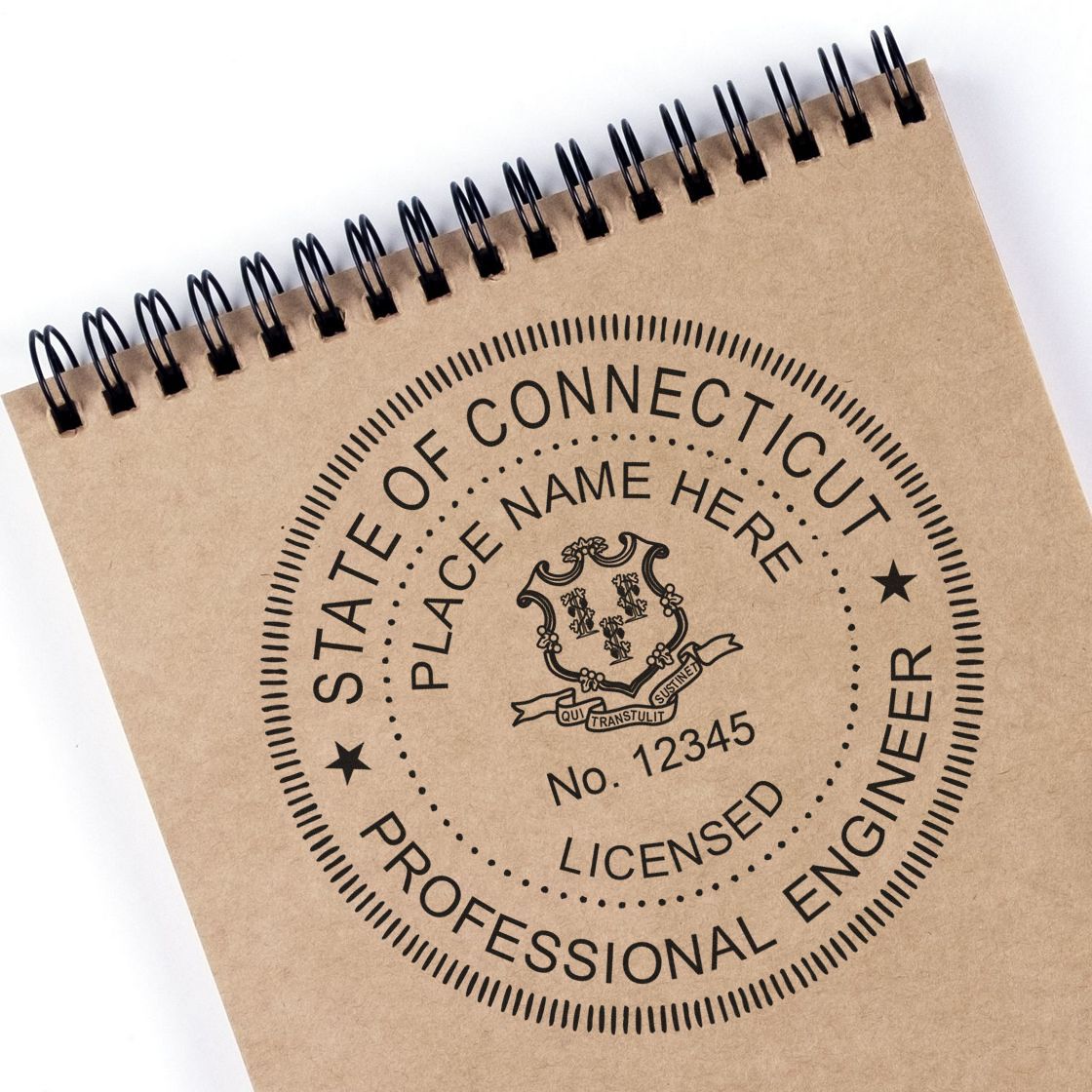
Can I use my out-of-state PE Stamp in Connecticut?
No, Connecticut does not allow the use of out-of-state PE stamps. In order to practice engineering in Connecticut and affix a PE stamp to engineering documents, you must obtain a PE license from the Connecticut Department of Consumer Protection. This ensures that all engineers working in Connecticut meet the state's specific requirements and adhere to its regulations. For more information on the Connecticut PE stamp requirements, you can refer to our article on connecticut pe stamp guidelines.
How long does it take to obtain a PE Stamp in Connecticut?
The timeframe for obtaining a PE stamp in Connecticut can vary depending on several factors. The process typically involves meeting education and experience requirements, passing the PE exam, and completing the application process. It may take several years to fulfill these requirements and obtain the necessary documentation. It is recommended to start the process as early as possible to allow ample time for preparation and completion. For detailed information on the application process, you can refer to our article on connecticut pe stamp application.
Can a PE Stamp be transferred to another individual?
No, a PE stamp is non-transferable and can only be used by the individual to whom it is issued. Each engineer must obtain their own PE stamp through the licensure process. This ensures that the engineer is accountable for their work and upholds the professional standards and ethical responsibilities associated with the PE stamp. It is important to remember that the PE stamp represents the qualifications and expertise of the individual engineer, and it cannot be transferred or shared with others.
These frequently asked questions address some common concerns about the Connecticut PE stamp. It is essential to familiarize yourself with the specific requirements and regulations set forth by the Connecticut Department of Consumer Protection to obtain and use the PE stamp correctly. By adhering to these guidelines, you can confidently demonstrate your professional competence and commitment to excellence in engineering.
About ESS
At Engineer Seal Stamps (ESS), we take pride in being the leading makers of high-quality rubber stamps, professional seals, and notary stamps. Our commitment to excellence is reflected in the state board guarantee that backs all our products. With ESS, you can be confident that you are getting the best of the best when it comes to stamping and sealing products.
Our team of experts will work closely with you to create customized rubber stamps and seals that meet your specific needs, whether you are an architect, engineer, surveyor, or other professional. We understand that time is of the essence in your line of work, which is why we offer a quick turnaround on all our products. ESS is also incredibly versatile, we cater to a broad range of industries, from oil and gas to healthcare, government, and education. When it comes to quality, our products speak for themselves. All our rubber stamps and seals are made using high-grade materials, ensuring that they will last you for years to come. Our stamping and sealing products are also designed to deliver crisp and clear impressions every time, so you can always be sure that your documents look professional and presentable.
At ESS, we are committed to providing our customers with stellar customer service, and we go above and beyond to ensure your satisfaction. Whether you need a customized rubber stamp, professional seal, or notary stamp, ESS is the trusted partner you can rely on for all your stamping and sealing needs.

